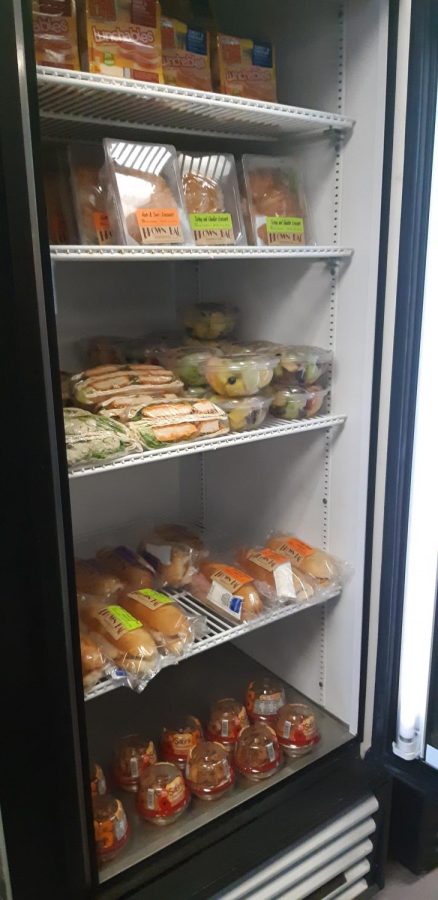GMOs: Great mistake or…?
Most stores sell products with GMO ingredients.
December 13, 2019
Do you really know what goes into your body when you eat something? How about when you drink a beverage?
Ever since the mid-1990s, most products have engineered ingredients in them, including processed amounts of soybeans, corn, or canola. In the United States alone, more than 60 percent of the foods on the shelves of supermarkets are genetically engineered, all through various methods of crossbreeding and the use of chemicals.
Now I’m no expert on numbers, but I do know that 60 percent is greater than half, and based on the size of the nation and the amount of food that is produced, it’s pretty evident that GMOs are a LARGE part of our daily food intake.
Senior Priscilla Chico said, “As far as I know GMOs are most likely a huge part of my daily life. A lot of products such as manufactured or fruits and vegetables contain GMOs.”
Of course, there’s no telling how many of you reading this have been well aware of this, but I can’t exactly note anyone looking too concerned about it, at least not in my range of vision.
Perhaps it’s because we don’t notice anything going wrong because of it, or maybe we feel as though we can’t do anything to change this. In an article in the New York Times, “Are G.M.O. Foods Safe?” it is stated that “90 percent of scientists” believe that GMOs are safe, yet only “slightly more than one-third” of consumers seem to agree with them. The conflicting part of these statistics is that while it’s more probable to believe in the research, there’s hardly any concrete evidence that indeed proves GMOs to be safe, while consumers have also attempted to disprove it, but to no avail either.
“I do not think enough people know about GMOs, given that it is extremely hard to find products in a normal grocery store (not a health food store or specialty store) that are labeled Non-GMO,” said Professor Lindsey Williamson, a SAC Biology Professor. “However, I also do not see GMOs as entirely bad…The bigger problem is that we only use a handful of common crops for our main food source (like rice, corn, and wheat). Because of our heavy reliance on a few small products, there has been an equal rise in the use of GMOs to keep them in high production.”
As common as it is for us to consume these products, I believe that she has a point; there’s certainly a preference and demand for these ingredients. If we maintain a different diet that doesn’t require the production of these crops; we may avoid the GMOs that exist all together if we avoid the common crops that do have them.
English teacher Mrs. Storms has a husband who was once the director of a food testing lab. Scott Storms states “Having worked in the food industry for the last seven years, I have been involved in testing food products to determine if they are GMO, so I have had a lot of exposure. GMOs are frequently discussed in food industry journals and conferences as well as mainstream media.”
From an official opinion, it’s evident that these genetically modified organisms are even more frequent in discussion than the general public knows about. And when it comes to the impact that these organisms bring, Storms said, “Genetic modifications include adding factors improving yields, including disease resistance, herbicide and pesticide resistance, drought and cold resistance just to name a few…These modifications result in increased yields, allowing increased availability and decreased cost.”
Ever since the 1990s, GMO foods have been consistently common in cotton, corn, and soybeans, but that isn’t to say there are other foods that contain GMO ingredients as well. As a matter of fact, there haven’t been any new regulations implemented that show which specific foods have GMOs in them. The specifics of the supposed data regarding GMOs in our food aren’t all that clear either, given that a great majority of the companies who make a profit off of GMOs are in charge of what information gets released to the public; they control what the public is allowed to know. We may hope for a change, but until an official ruling overcomes the production of GMOs, this is the reality we live in.






































